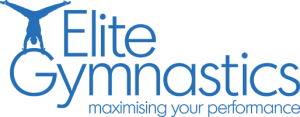Listening Cherry 21 – Vocal gymnastics
Image from here.
‘Vocal gymnastics’ is the term used in my current work to refer to activities which serve the goal of improving the students’ listening, but which involve them in using their voices. To an naive observer, the activities will look and sound like pronunciation activities which practise the bad habits of being unclear, unintelligible, and incomprehensible.
But I prefer to avoid using ‘pronunciation’ when talking about such listening activities, precisely because it is so strongly associated with ideas of clarity, intelligibility, and correctness.
Much of the speech that students have to listen to in everyday life is unruly, unpredictable, and messy – quite the opposite of the speech style we want them to emulate in their pronunciation and speaking. So the vocal gymnastics activities are quite specifically not designed to help students become more intelligible in their own speech. On the contrary, these activities are designed to help students become familiar and comfortable with the fast messy speech that they will encounter in real life.
So what do these exercises consist of? They typically focus on on a ‘key phrase’ which is a short group of words (e.g. ‘so you won’t be’, ‘where there were’). Each key phrase is used to illustrate the difference between the Greenhouse, Garden and Jungle forms of words – for example the fact that consonants or syllables are often dropped (‘consonant death’, ‘syllable death’). For more on Greenhouse/Garden/Jungle see here.
Teachers conduct students saying the different forms of the key phrase in choral drills, in rounds and in ping-pong activities. The Greenhouse/Garden/Jungle forms are first presented in tables such as Table 1 below. The Greenhouse (citation) forms are given in column 1 in both orthographic and in phonetic symbols; the middle column gives the Garden version with rules of connected speech applied (in this case elision of ‘t’ of ‘won’t’ and the ‘n’ becoming ‘m’ before ‘b’); and column 3 has the Jungle version, with ‘so you’ becoming a single syllable and the ‘m’ of column 2 disappearing. The three forms of the bottom row are presented in a recording, and after listening several times, students are asked to repeat all three forms at the same time and the same speed as the recording.
Table 1
| Greenhouse | Garden | Jungle |
|---|---|---|
| SO YOU WON’T BE | SO you WONE.be | syu.wo.be |
| soʊ.juː.woʊnt.bi | soʊ.jə.woʊn(woʊm).bi | sjə.woʊ.bi |
Then attention turns to Table 2 below, where there are two options for classroom activities (actually, with language presented in a table there are a larger number of options, but I shall focus on just two): the round, and ping-pong.
Table 2
| 1 | 2 | 3 | 4 | |
|---|---|---|---|---|
| GRN | SO | YOU | WON’T | BE |
| GDN | SO you | WONE be | HERE | THEN |
| JNG | syu.wo.be HERE then | syu.wo.be HERE then | syu.wo.be HERE then | syu.wo.be HERE then |
(For this section of the blog, as it is a set of instructions, I will go into instructional mode, and use ‘you’ and imperatives).
The round
For the round, divide the class into three large groups (e.g. left, middle, right) and explain that you are a musical conductor, and that they are to start reading the table, starting at row 1, and then proceeding to rows 2 and 3, following your beat. When the left-hand group starts row 2, you get the middle group to start row 1, and when the middle group starts row two, (the left-hand group will now be on the last – Jungle – row) you get the right-hand group to start row 1. The idea is to have a cloud of sound with the three different ways of saying the key phrase happening simultaneously. Then, after this whole class mode, ask students, in groups of three, to do the same round.
Ping pong
For the ping pong activity, tell the class to imagine they are holding a ping-pong bat (table tennis bat), and that for each word they say, they simultaneously play an imaginary forehand or backhand. First of all, it will be you the teacher against all of the class. Explain that you, and they, will take turns to say the words in row 1. So you will say the words in columns 1 and 3, and they will say the words in 2 and 4. Start by doing an exaggerated mime of a ping-pong serve – a high toss with back-spin serve and say SO as you ‘hit’ the ball slowly towards the class, and they do a slow return as they say YOU, and so on through the cells and rows of the table, continuing from the top, going through the whole table and speeding up each time through. Then ask them to do this in pairs.
The purpose of this activity is to embed the different soundshapes of the key phrase in the students’ medium and long-term memories so that they can become more proficient listeners.
It will be quite noisy, and also quite fun! Encourage students to think about this exercise whenever they are walking somewhere, and to think of, and repeat to themselves this vocal gymnastics exercise quietly to themselves to the rhythm of their walk. This will result in an ear worm, a rhythmic unit of fast speech which will continue to replay (wanted or unwanted) in their memories for a while, thereby helping them become more familiar and comfortable with the realities of spontaneous everyday speech.
So – not pronunciation, but vocal gymnastics.
Thanks to Sue Sullivan, Sheila Thorn, and Annie McDonald for the ideas behind this post.


